Class 4 EVS Practice Questions Chapter 10 Our Sky
Multiple Choice Questions (MCQs)
Q1: What color does the sky appear in the morning?
(a) Blue
(b) Orange and bright
(c) Red
(d) Dark
Ans: (b) Orange and bright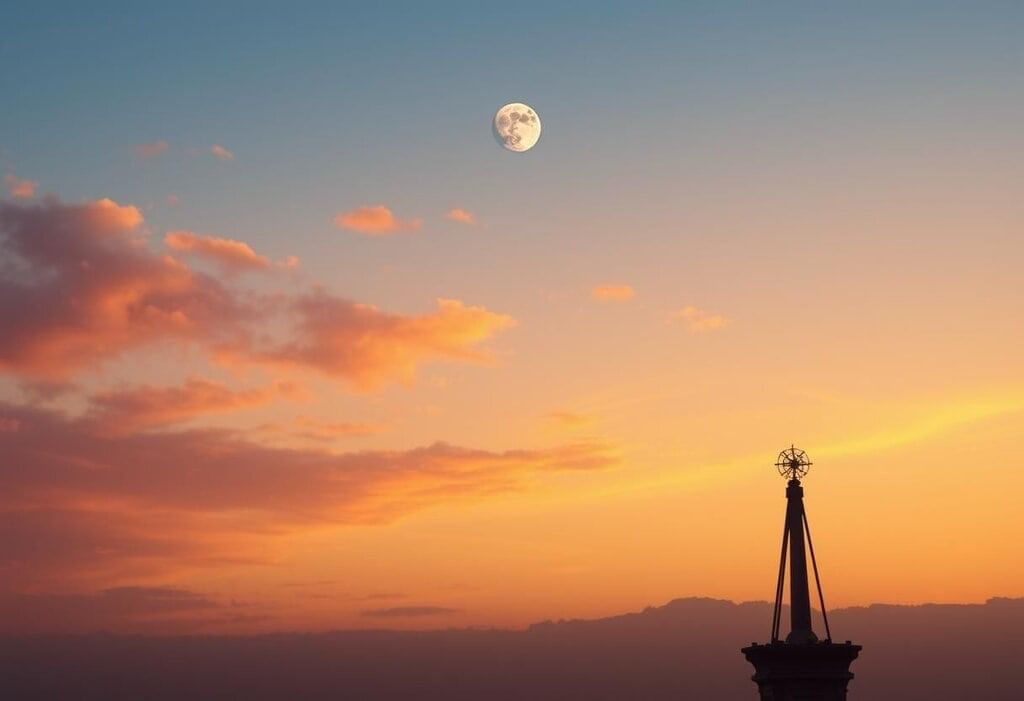
Q2: What is the full Moon called in the chapter?
(a) Amavasya
(b) Poornima
(c) Saptarshi
(d) Chandrayaan
Ans: (b) Poornima
Q3: What device did ancient people use to tell time based on shadows?
(a) Clock
(b) Sundial
(c) Telescope
(d) Calendar
Ans: (b) Sundial
Q4: When is Diwali celebrated?
(a) On the Full Moon
(b) On the New Moon
(c) When the Moon is a crescent
(d) On the first night of the Moon
Ans: (b) On the New Moon
Q5: What did India’s Chandrayaan mission aim to explore?
(a) Mars
(b) The Sun
(c) The Moon
(d) Venus
Ans: (c) The Moon
Fill in the Blanks
Q1: The Sun appears to move from ________ to ________ during the day.
Ans: East, West
Q2: The ________ is the night when the Moon is completely full.
Ans: Poornima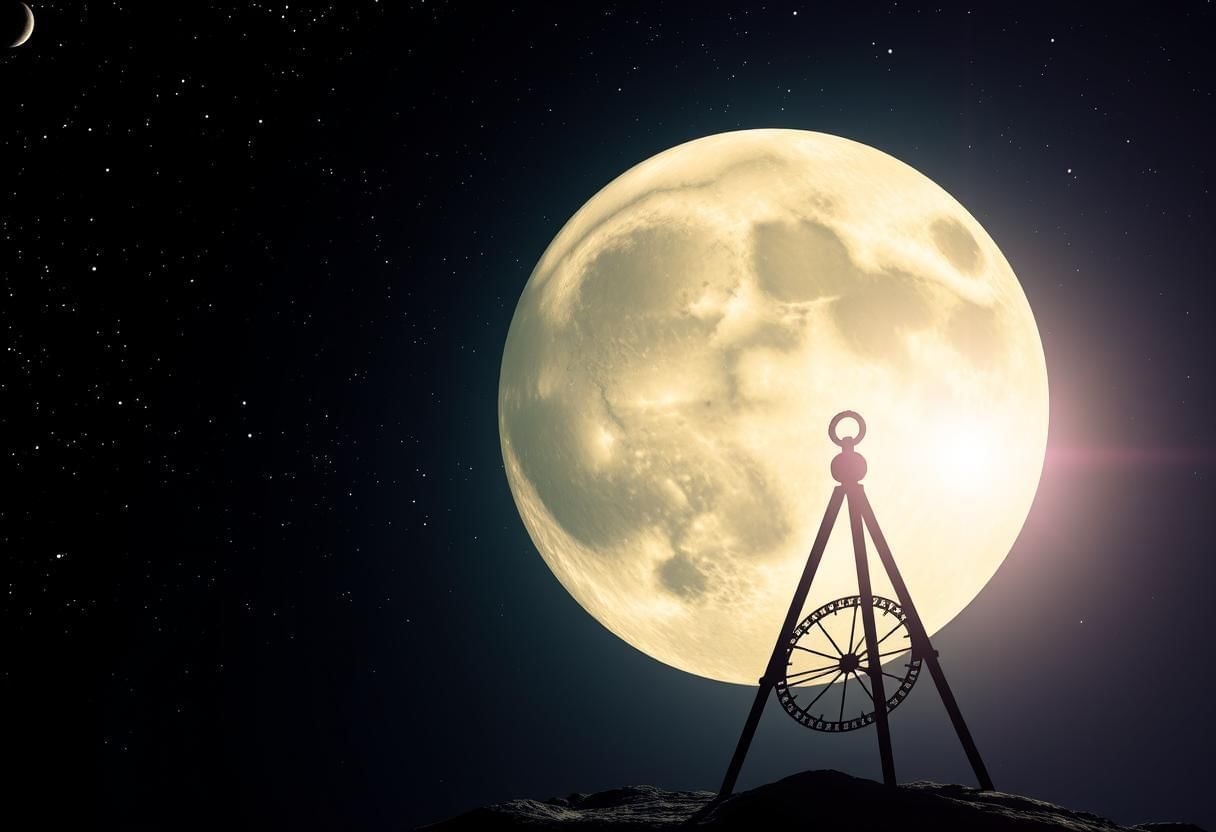
Q3: The ________ is the night when the Moon cannot be seen.
Ans: Amavasya
Q4: The ________ Lander of India’s Chandrayaan mission successfully landed on the Moon in 2023.
Ans: Vikram
Q5: The Saptarshi is a group of ________ in Indian astronomy.
Ans: Stars
Match the Following
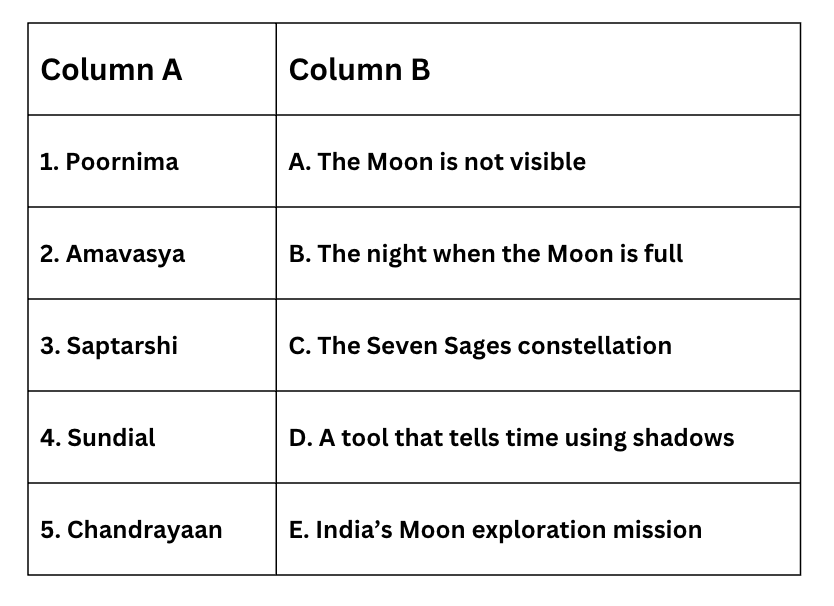
Ans: 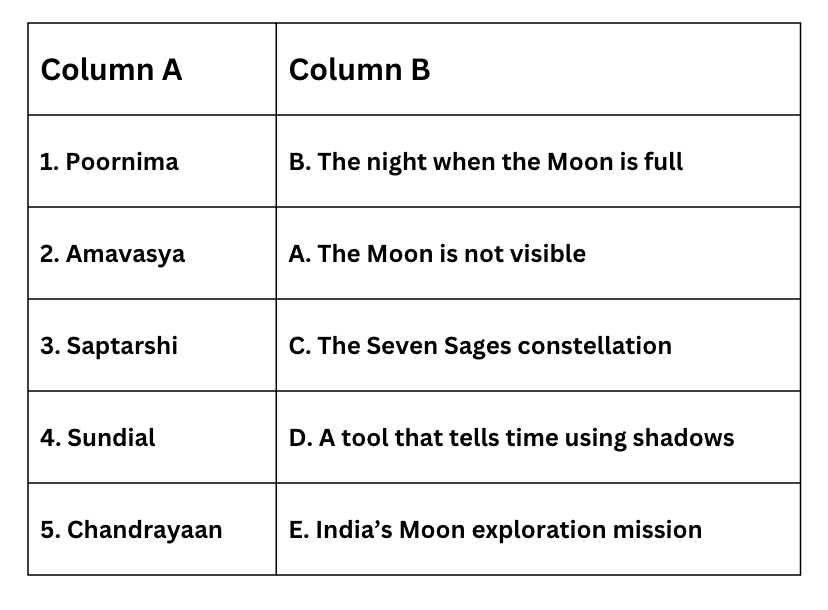
Short Question Answers
Q1: What happens to the sky’s color as the day progresses?
Ans: In the morning, the sky is orange and bright. In the afternoon, it is blue and clear. At night, it turns dark with twinkling stars.
Q2: What is the significance of the Full Moon (Poornima) and the New Moon (Amavasya)?
Ans: The Full Moon, or Poornima, is when the Moon appears as a complete circle. The New Moon, or Amavasya, is when the Moon is not visible at all.
Q3: How did ancient people use shadows to tell time?
Ans: Ancient people used a device called a sundial, which used the shadow cast by the Sun to tell time accurately.
Q4: What is the significance of the Chandrayaan mission?
Ans: Chandrayaan is India’s mission to explore the Moon. In 2023, the Vikram Lander successfully landed on the Moon and gathered important data about its surface.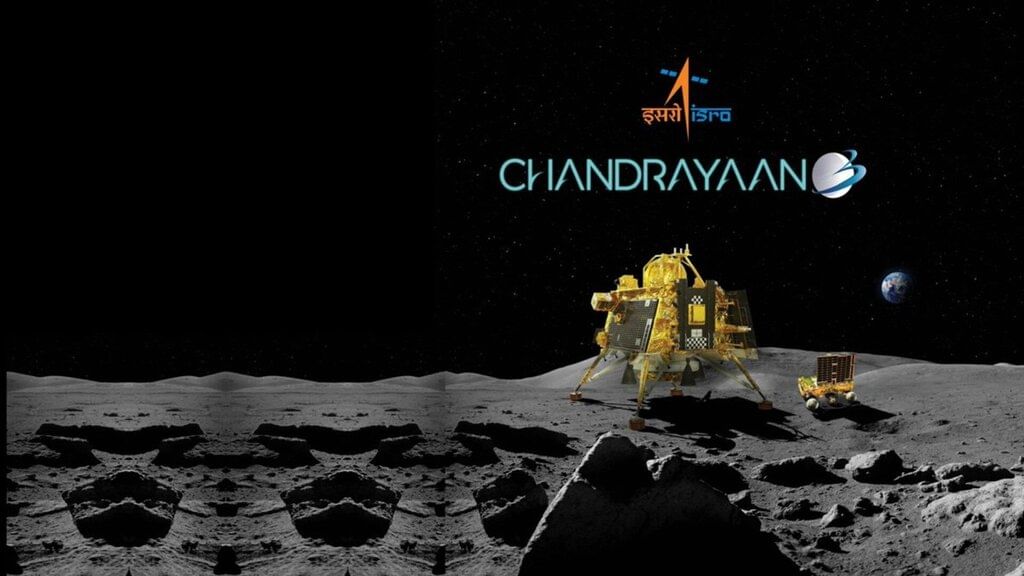
Q5: How does studying the sky help us understand nature?
Ans: Studying the sky helps us track time, understand natural cycles, and observe celestial events like the movement of the Sun, Moon, and stars.
Vocabulary Activity - "Guess the Word"
Q1: The night when the Moon is completely full.
Ans: Poornima
Q2: A tool used to tell time based on shadows.
Ans: Sundial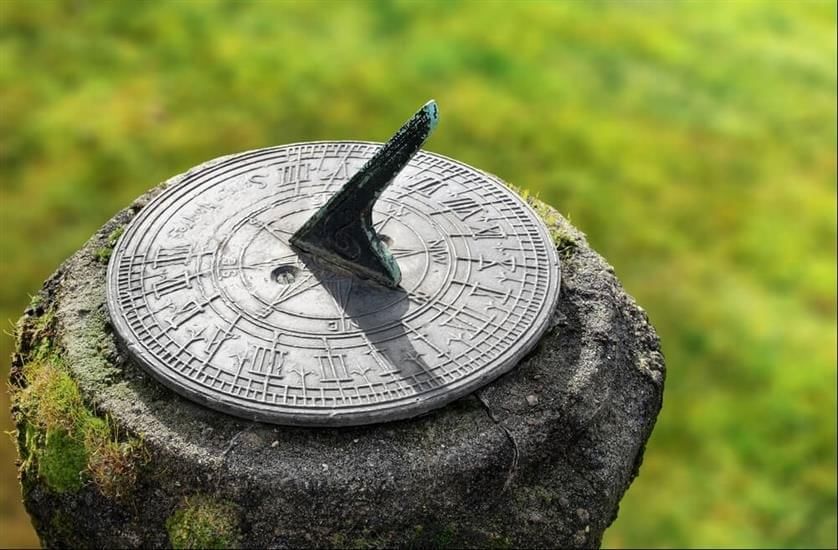
Q3: A group of stars known as the Seven Sages in Indian astronomy.
Ans: Saptarshi
Q4: The Moon is not visible during this phase.
Ans: Amavasya
Q5: India’s mission to explore the Moon.
Ans: Chandrayaan
FAQs on Class 4 EVS Practice Questions Chapter 10 Our Sky
| 1. What is the main theme of "Our Sky Class 4"? |  |
| 2. How does "Our Sky Class 4" incorporate hands-on activities for students? |  |
| 3. What age group is "Our Sky Class 4" intended for? |  |
| 4. Are there any assessments included in "Our Sky Class 4"? |  |
| 5. How can parents support their children while using "Our Sky Class 4"? |  |





















